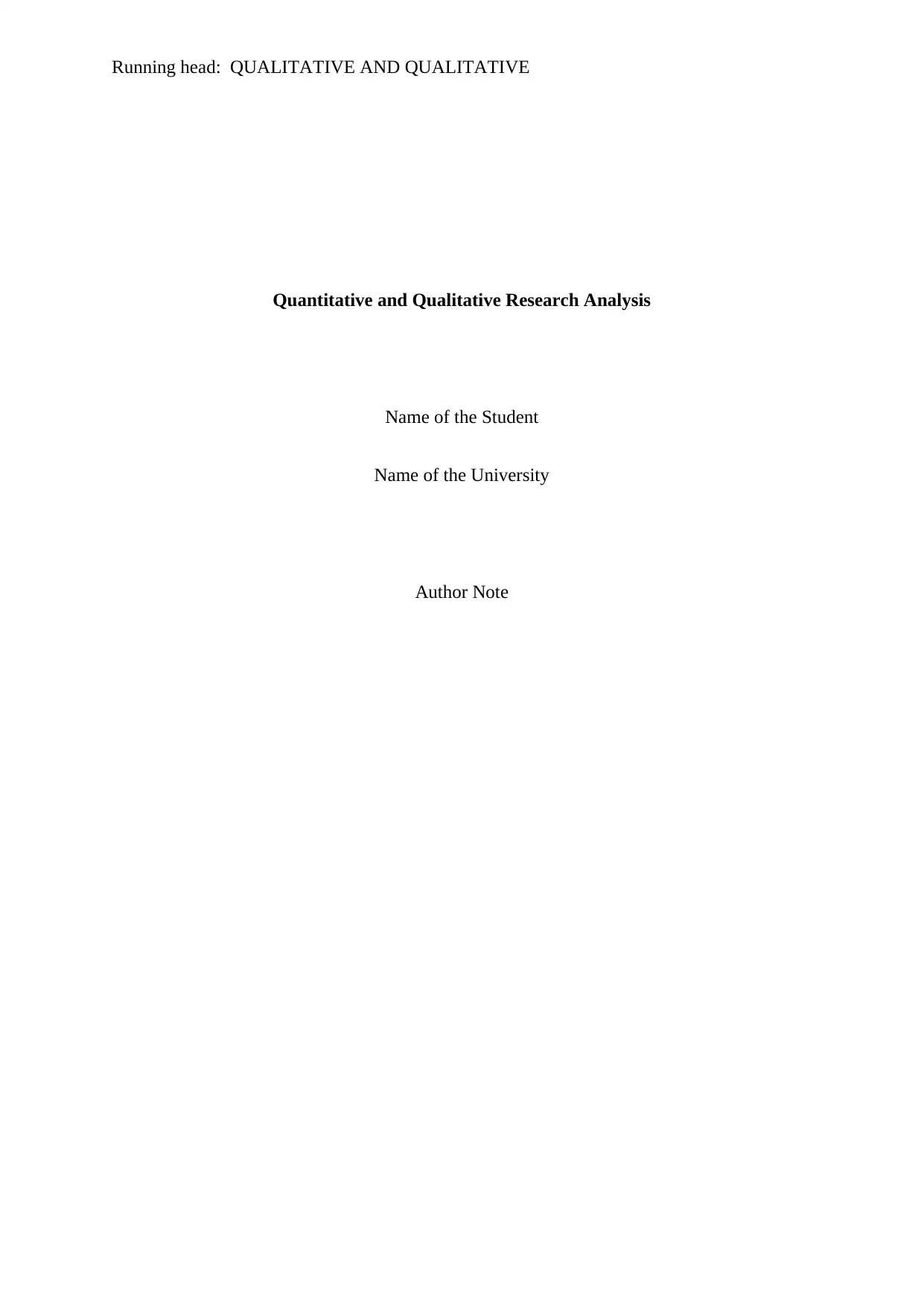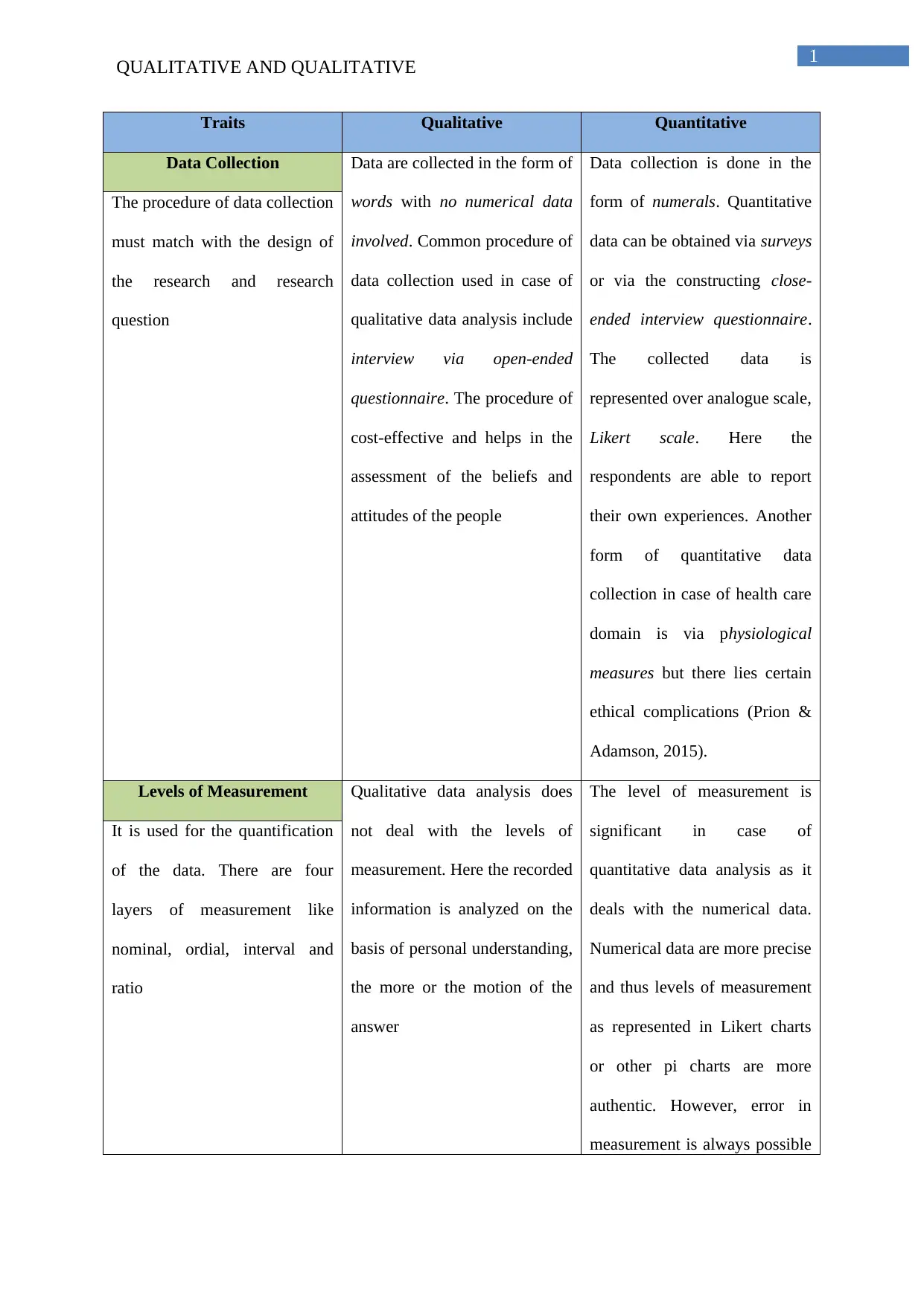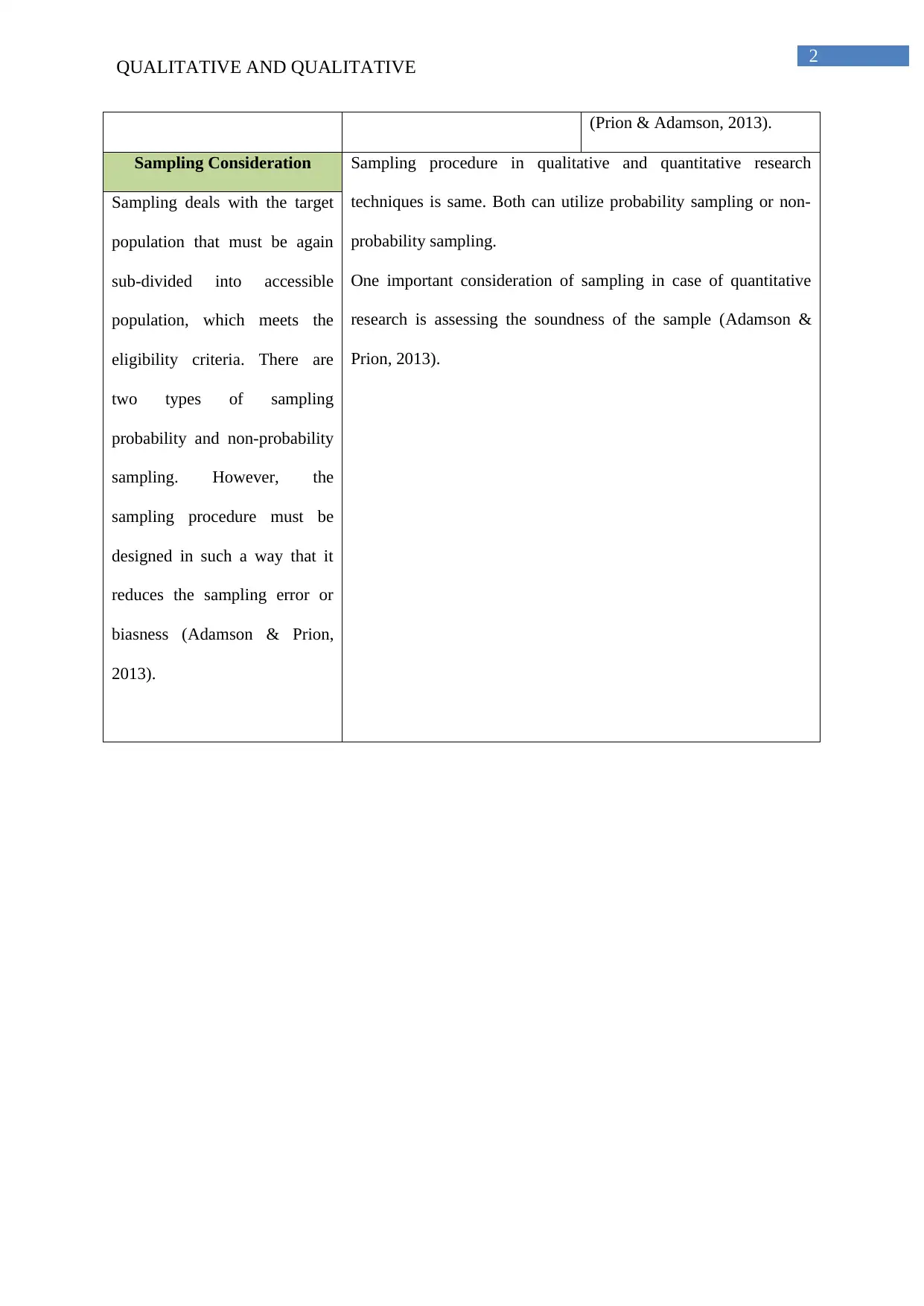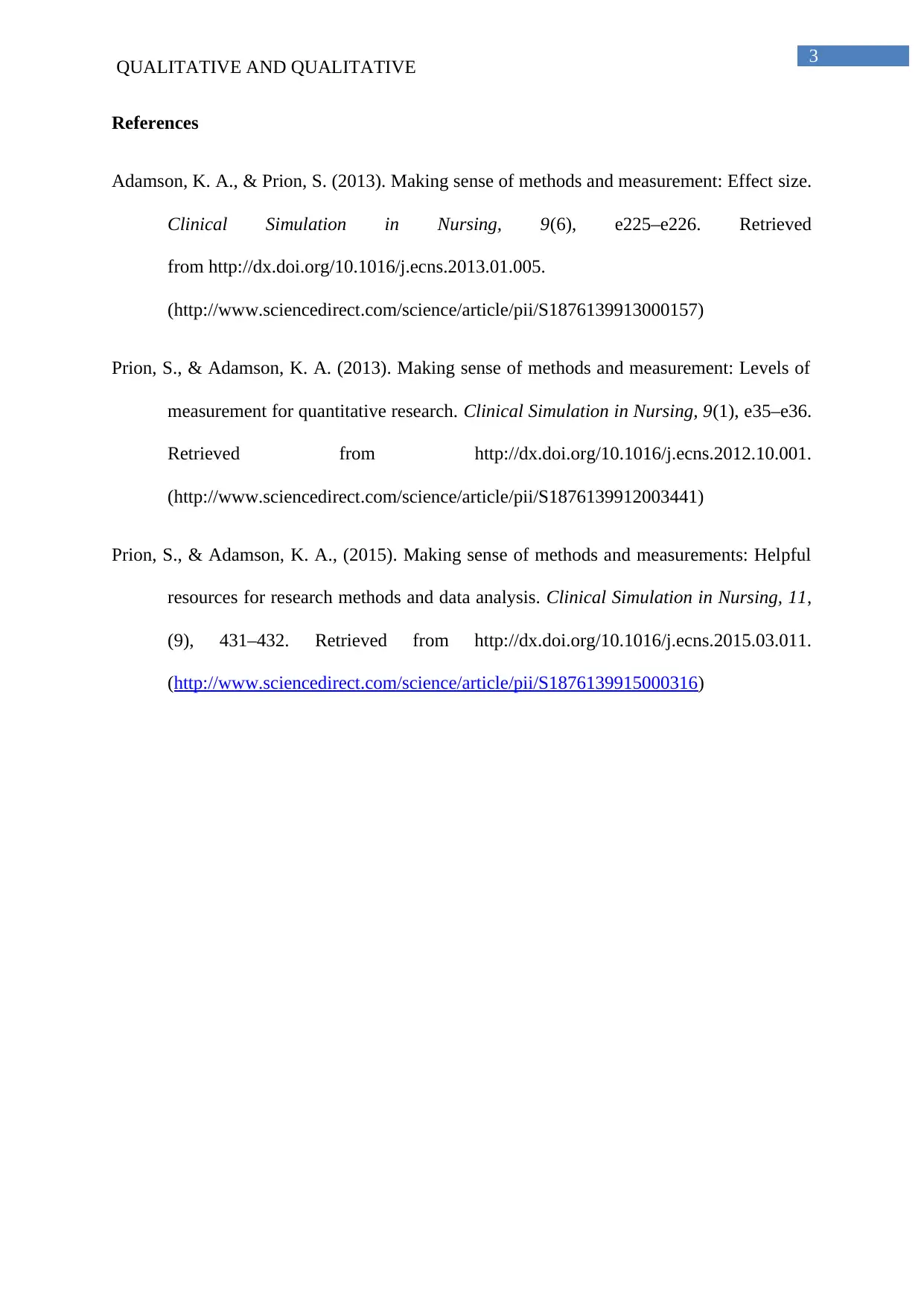Comparative Analysis of Qualitative and Quantitative Research Methods
VerifiedAdded on 2020/04/15
|4
|551
|111
Homework Assignment
AI Summary
The assignment presents a detailed comparison between qualitative and quantitative research methods with a focus on data collection, levels of measurement, and sampling considerations. Qualitative data is collected using open-ended questionnaires and interviews, capturing words to assess beliefs and attitudes, while quantitative data involves numerical data gathered through surveys or physiological measures. The study highlights the importance of matching data collection procedures to the research design. In terms of levels of measurement, qualitative analysis does not emphasize specific scales, whereas quantitative analysis uses precise measurements such as nominal, ordinal, interval, and ratio levels. Sampling in both methods can use probability or non-probability approaches; however, for quantitative studies, ensuring sample validity is crucial to minimize sampling errors. References include works by Prion & Adamson (2013, 2015) that discuss measurement and methodology.
1 out of 4











![[object Object]](/_next/static/media/star-bottom.7253800d.svg)